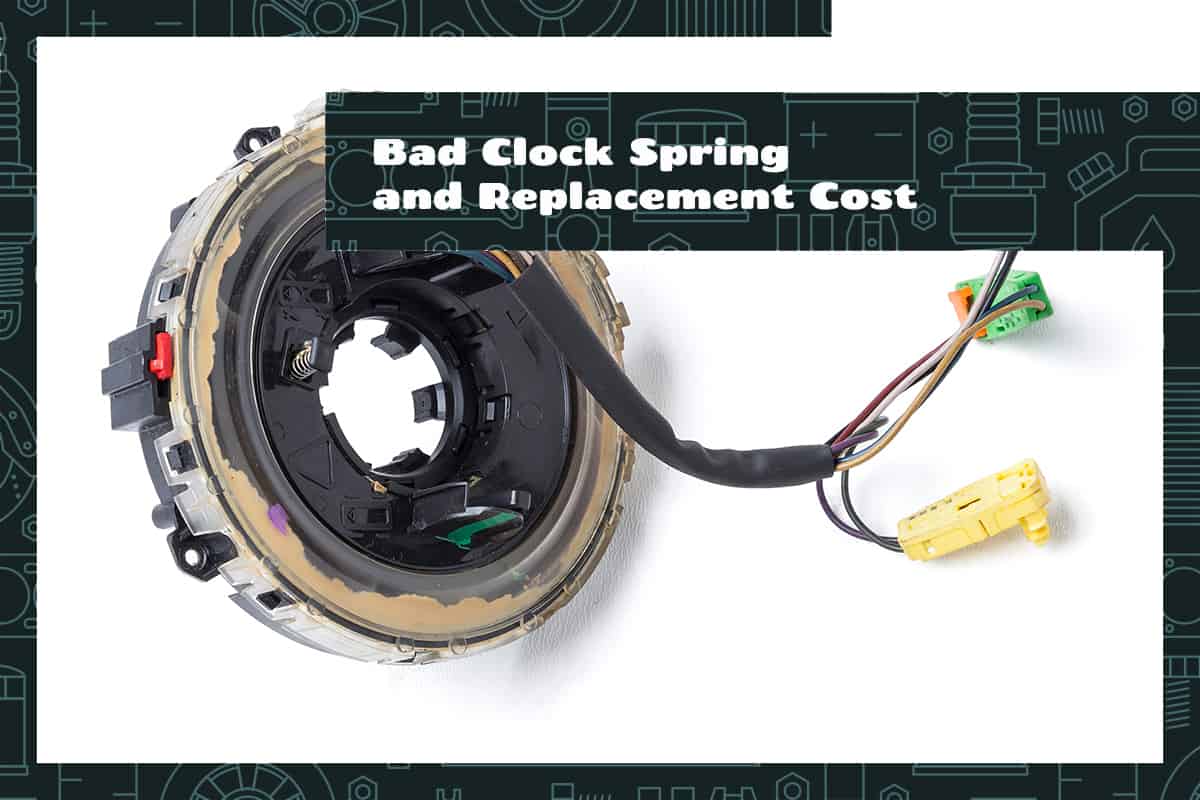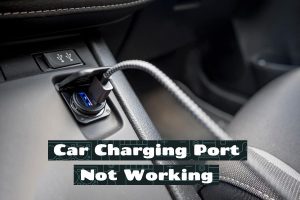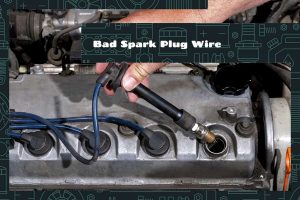The clock spring, a component nestled within your vehicle’s steering wheel, is responsible for maintaining the constant electrical connection to the airbags, horn, and other driver-assist systems, even when the wheel turns. Its functionality underpins many of your vehicle’s operations, meaning a malfunctioning clock spring can lead to significant issues, impairing the safety features of your car.
Bad clock spring symptoms include non-working horns, cruise control problems, airbag warning lights, or difficulties in steering. The average replacement cost for a bad clock spring typically ranges between $200 to $350, including parts and labor.
Below, we’ll dig deeper into the nuances of the clock spring, from understanding its role to diagnosing problems and addressing them through proper replacement methods. Additionally, we’ll explore the cost factors involved in the replacement process.
The Clock Spring: How it Works
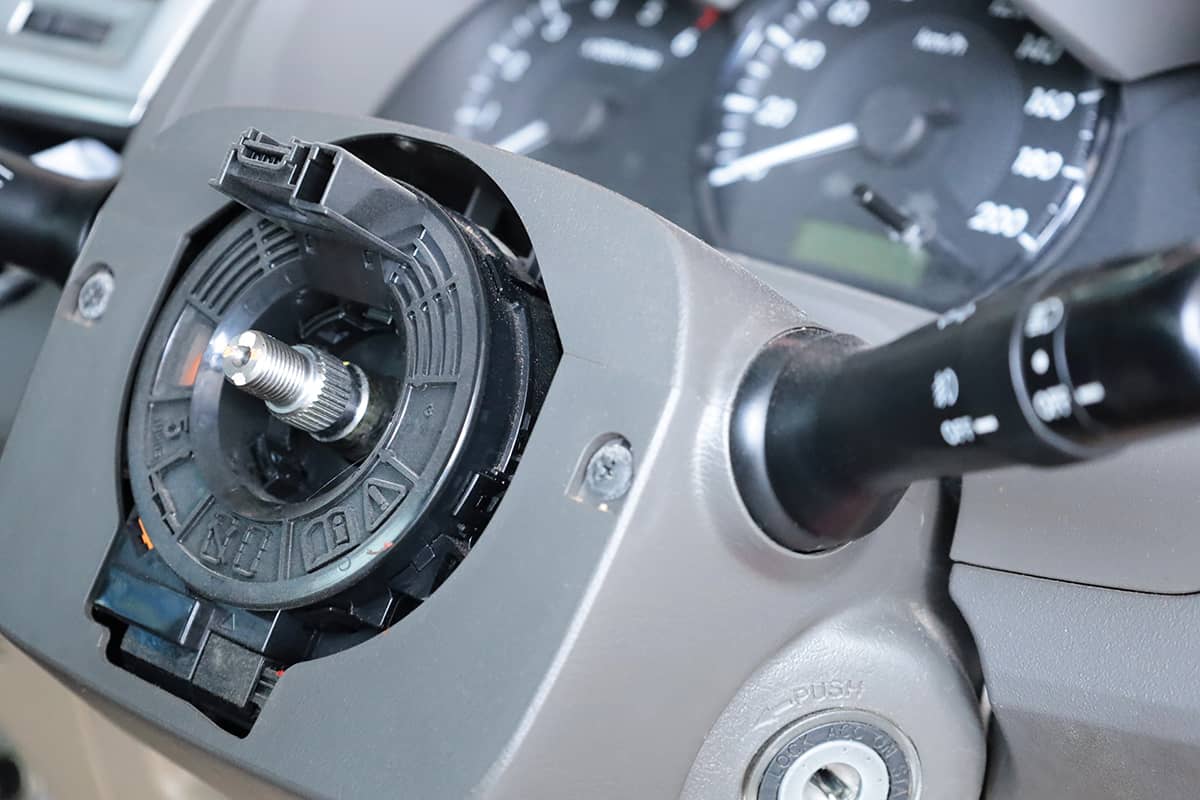
Located within the steering column, just behind your car’s steering wheel, resides a component that doesn’t often come up in everyday car talks: the clock spring. To the layman, a clock spring may appear odd, given that its role is hardly reflected in its name. Yet, this humble piece of equipment plays an integral part in maintaining the functionality and safety of your vehicle. Here’s how it works.
Composition of a Clock Spring
Primarily, a clock spring is a special type of rotary electrical connector. It gets its name from its unique design – a flat cable wound in a spiral or ‘clockwise’ manner, reminiscent of the springs seen in old clock mechanisms.
The clock spring’s purpose is to allow the electrical continuity for components on the steering wheel while permitting the wheel to revolve. The clock spring is made of a flat multicore cable wound around a small reel housed in a plastic assembly.
As the steering wheel turns, the reel rotates, unwinding in one direction and winding up in the other. This coil and uncoil mechanism allows the steering wheel to turn without tugging or disconnecting the wiring harness.
Role of a Clock Spring in Steering and Safety Systems
Think of the clock spring as an electrical conduit that connects your car’s static systems with the steering wheel’s rotating assembly. As you turn the wheel, the clock spring unwinds and rewinds, ensuring the cable doesn’t become tangled or broken, maintaining the electrical connection.
The clock spring plays a significant role in the deployment of the driver’s airbag. The airbag module requires a constant electrical connection to function correctly – to detect a collision and deploy the airbag. If a clock spring malfunctions, it may interrupt the electrical connection, preventing the airbag from deploying during an accident, thereby posing a risk to the driver’s safety.
Further, the clock spring facilitates the functioning of various driver-assist and comfort features. These features, typically embedded in the steering wheel, include the horn, the car’s infotainment controls, cruise control, and more. A clock spring failure could cause any of these systems to malfunction, resulting in inconvenience and potentially compromising safety.
Spotting a Bad Clock Spring
A failing clock spring can impact your car’s performance and safety. Identifying a malfunctioning clock spring early can help prevent potential hazards and costly repairs down the line.
- Airbag Warning Light: The airbag system is directly linked to the clock spring. When the clock spring starts to wear out or fail, the first sign often is the illumination of the airbag warning light on the dashboard. This is due to the disrupted electrical connection between the airbag system and the car’s computer.
- Non-functioning Steering Wheel Controls: As the clock spring is responsible for maintaining the electrical connection to the controls on the steering wheel, a malfunctioning clock spring can result in these controls not working. This could include the horn, the car’s audio and infotainment system controls, and the cruise control.
- Noise When Turning the Steering Wheel: If you hear a clicking or grinding noise when turning the steering wheel, it could be a sign of a failing clock spring. The clock spring needs to move smoothly to function correctly, and any noises may indicate a problem.
- Difficulty Steering: In some cases, a bad clock spring can result in steering difficulties. If the clock spring is unable to maintain tension due to damage or wear, it can affect the vehicle’s ability to steer smoothly.
The Replacement Process: A Step-by-step Guide
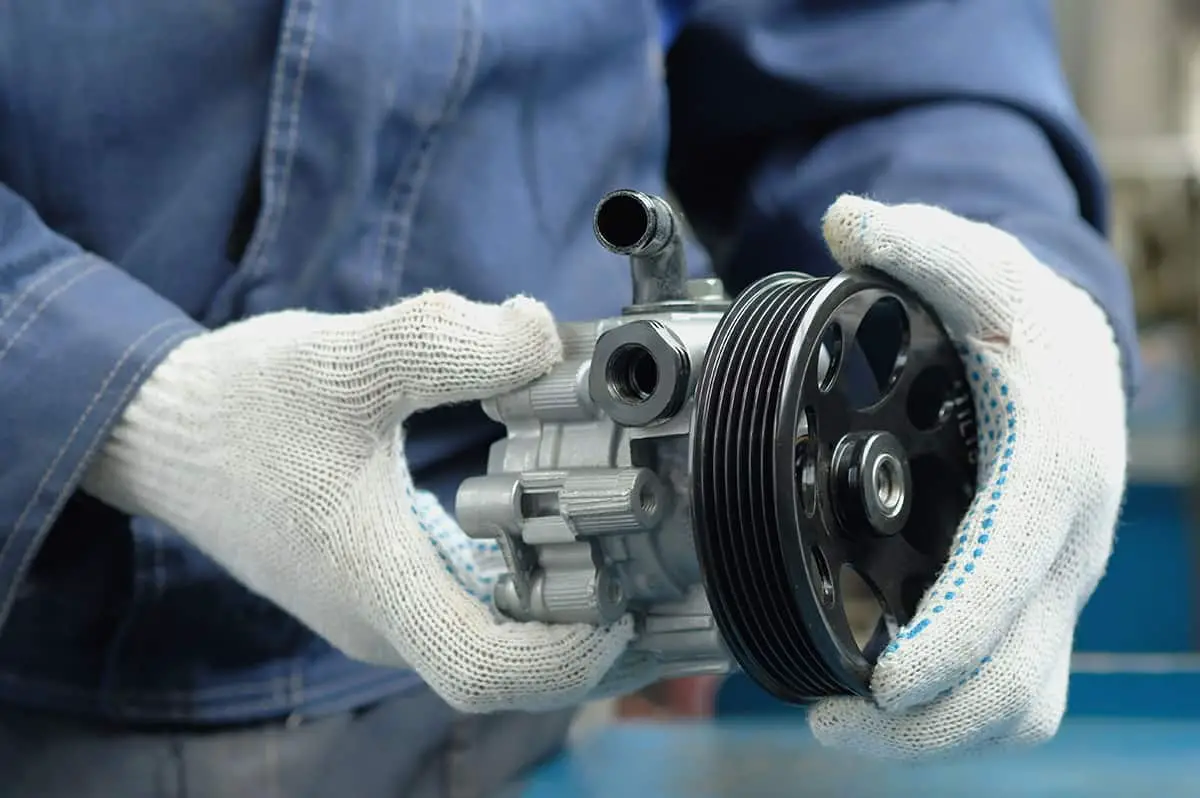
Clock spring replacement is a crucial task that should be carried out promptly to keep your vehicle’s steering and safety systems operating properly. However, it involves dealing with sensitive components such as the airbag system, necessitating a careful, knowledgeable approach.
Preparing for the Replacement
Since you’ll be dealing with the airbag system, ensure the battery is disconnected before you start to prevent accidental airbag deployment. Wait for about 15 minutes to allow any residual power in the airbag system to dissipate before beginning work.
Detailed Process of Clock Spring Replacement
- Remove the Airbag Module: The first step in the clock spring replacement is removing the airbag module. This typically involves removing the bolts holding it in place on the steering wheel, and disconnecting the electrical connectors.
- Remove the Steering Wheel: After removing the airbag module, the next step is removing the steering wheel. This is usually done by loosening the central bolt, marking the steering wheel alignment, and then carefully removing the steering wheel with a puller tool.
- Remove the Old Clock Spring: With the steering wheel removed, you can now access the clock spring. Carefully remove any connectors, screws, or clips holding the clock spring in place, and then remove it from the steering column.
- Install the New Clock Spring: Take the new clock spring and carefully install it in place of the old one. Ensure that it’s correctly aligned and secured with the necessary screws, clips, and connectors. Some clock springs come with a locking mechanism to prevent the ribbon cable from unwinding during installation – remove this lock only after installation.
- Reinstall the Steering Wheel and Airbag Module: Once the new clock spring is installed, the next steps are to reinstall the steering wheel, ensure it’s correctly aligned, and then reinstall the airbag module.
- Reconnect the Battery and Test: With everything reinstalled, you can now reconnect the battery. Turn on your vehicle and ensure that the airbag warning light goes off as usual, and test the function of all steering wheel controls.
Safety Measures to Follow During Replacement
The clock spring must be correctly aligned during installation to prevent damage when the steering wheel turns. Some clock springs come with alignment marks or a locking mechanism to assist with this. Never force or rush the process as delicate components can easily be damaged.
Clock spring replacement can be a challenging task for those unfamiliar with car repairs, as it involves dealing with delicate and safety-critical components. If you’re unsure about any steps in the process, consider seeking professional help.
Estimating the Replacement Cost
Determining the cost of a clock spring replacement is key to planning for this crucial repair. However, several factors can influence the overall expense. Here, we’ll break down the components of the replacement cost and provide a rough estimate to help you budget accordingly.
Cost of the Clock Spring
The cost of a new clock spring varies widely, depending on the make, model, and year of your vehicle. On average, a new clock spring may cost anywhere from $50 to $250, though luxury or special-edition cars may have more expensive parts.
Labor Costs
The labor cost depends on the hourly rate of the mechanic or repair shop and the time it takes to complete the replacement. On average, clock spring replacement takes around two hours, but this can vary based on the complexity of the vehicle’s design.
Most professional mechanics or auto repair shops charge an hourly rate ranging from $70 to $130, depending on their expertise, location, and the complexity of the job.
Additional Costs
There may be additional costs associated with the clock spring replacement. For example, if the faulty clock spring damaged other parts of your vehicle’s steering or electrical system, these parts may also need repair or replacement.
FAQs
1. What’s the life expectancy of a clock spring?
The life expectancy of a clock spring depends on several factors, including the driving conditions, the quality of the part, and the make and model of the vehicle. However, on average, a clock spring is designed to last between 80,000 to 100,000 miles. Some clock springs can exceed this range, while others might fail sooner.
2. Can I drive with a bad clock spring?
Technically, a vehicle can still be driven with a bad clock spring. However, it’s strongly discouraged. The clock spring is responsible for maintaining electrical continuity for all the electrical components located in the steering wheel, including the airbag system, the horn, and other steering wheel-mounted controls.
3. Does a bad clock spring trigger the check engine light?
A bad clock spring typically doesn’t trigger the check engine light. However, it can cause other warning lights to illuminate on your vehicle’s dashboard. The most common warning signal is the airbag light since the clock spring is a critical component of the airbag system. If you notice your airbag light is on, it could be a sign of a faulty clock spring.
